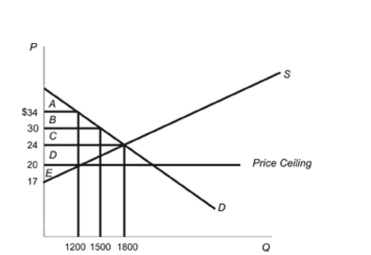(Figure: Random Allocation under Price Ceilings) Refer to the figure. The government enacted a price ceiling of $6 per unit. Using the information provided in the graph, calculate the following: Figure: Random Allocation under Price Ceilings  a. If the goods are allocated randomly between the high-value uses and the low-value uses, what is the total amount of consumer surplus in dollars? b. What is the lost amount of consumer surplus when goods are allocated randomly, when compared to a situation where the goods are allocated only to the highest value uses?
a. If the goods are allocated randomly between the high-value uses and the low-value uses, what is the total amount of consumer surplus in dollars? b. What is the lost amount of consumer surplus when goods are allocated randomly, when compared to a situation where the goods are allocated only to the highest value uses?
Definitions:
Moral Efficacy
An individual's belief in their ability to mobilize and sustain moral action in the face of challenges and opposition.
Moral Ownership
The feeling or belief that one has an ethical responsibility toward something or someone.
Moral Conation
The aspect of one's mental processes directly connected to ethics, willpower, and the motivation to act in alignment with one's moral values.
Socialized Power Orientation
A leadership approach focused on using power for the benefit of others rather than for personal gain.
Q2: (Figure: Supply-Driven Price Change) Refer to the
Q2: What are the criteria for a just
Q3: I n 1985 Josef Kleinfeld purchased a
Q4: If buyers are required to pay a
Q21: Which of the following is TRUE about
Q23: Perhaps the biggest sign of the accuracy
Q43: Surpluses drive price up while shortages drive
Q52: Which of the following statements is correct?<br>A)
Q63: <img src="https://d2lvgg3v3hfg70.cloudfront.net/TB3375/.jpg" alt=" " class="answers-bank-image d-block" rel="preload"
Q124: How did economists try to prove that